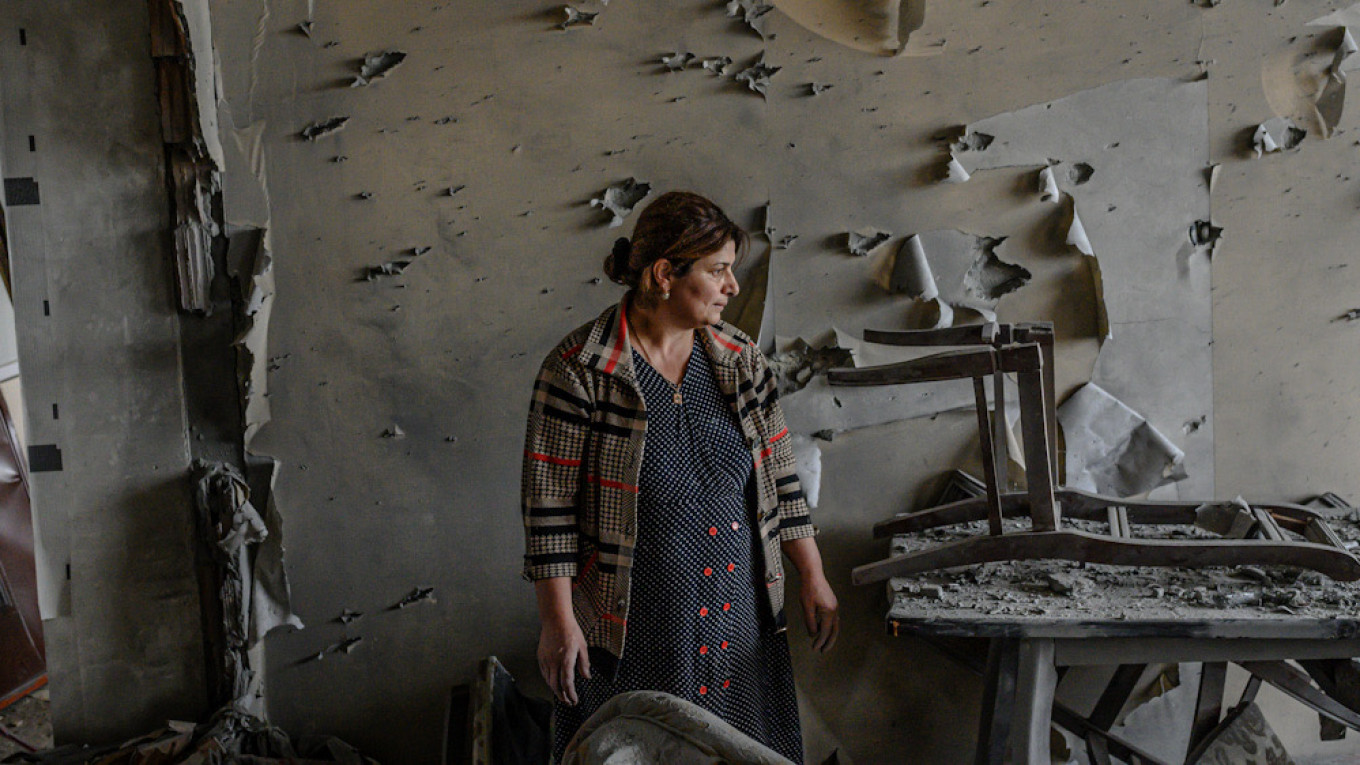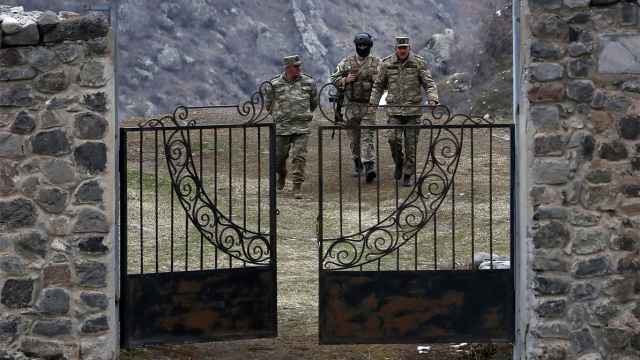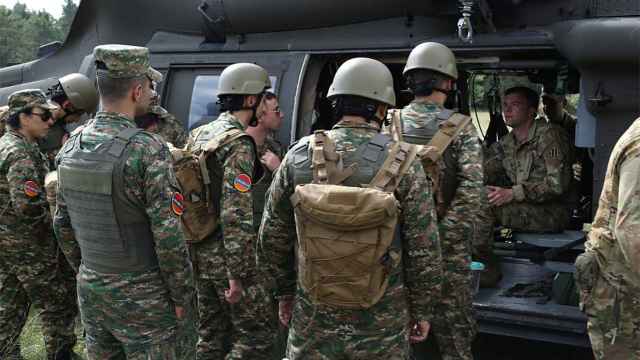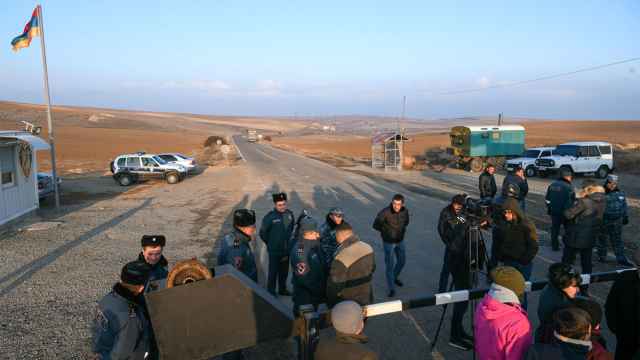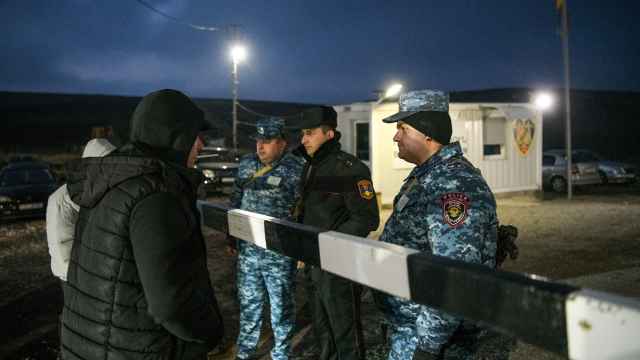On Nov. 9, an armistice was signed to end the fighting in Nagorno-Karabakh between Armenia and Azerbaijan. The conflict was relatively short lived, lasting from Sept. 27 to Nov. 9, but it proved to be an intense inter-state conflict fought by two heavily armed opponents. Both sides employed advanced military technology, with Azerbaijan proving the decisive victor in the war. The implications of the conflict continue to reverberate well outside the region given its potential significance for regional and great powers alike, while further spurring debates on the character of modern warfare.
Azerbaijan’s successful use of drones proved a tactical sensation, although it broadly confirmed long standing lessons on the devastating effect airpower can have on a large ground force with relatively poor air defenses. The use of unmanned aircraft systems (UAS) in this conflict marks an evolution more so than a revolution in the applications of airpower.
Military establishments look to wars like Nagorno-Karabakh for insights about capabilities, doctrine, operational art and how their forces might fare against similarly armed adversaries or perhaps those with far more capable militaries. The United States is on a quest for defining conflicts, like the Arab-Israeli War of 1973, to shape the direction of its future investments, and consequently looks to wars such as the Russian conflict with Ukraine, or Armenia’s war with Azerbaijan, for lessons learned.
In terms of capabilities, it seems clear that remotely operated systems offer the advantage of airpower, sensors and precision-guided weapons to small and middle powers at a dramatically discounted price compared to the cost of manned aviation. This technology is diffusing much more rapidly than customized counters, or air defense systems designed to deal with it. The latter will eventually catch up, but in the interim, drones, especially loitering munitions drones, present a significant challenge for modern air defenses and ground forces. The Nagorno-Karabakh conflict helped settle the question on whether legacy air defenses, such as the dated Soviet systems employed by Armenia, could be suitable or adapted to dealing with contemporary drones. The answer is decidedly negative, especially when combinations of drones are used for target identification and strikes, or via swarming tactics.
While modern air defense appears to have a spotty performance record, the story should not be oversold. A number of Russian exported Pantsir-S1s have been destroyed in other conflicts, but Turkey has also lost plenty of its TB2 drones in places like Libya. It depends on the system, operator and context. Some perform much better than others. The same can be said of electronic warfare systems deployed in this conflict. System on system matchups are not especially revealing. These lessons should not be carelessly generalized to powers like Russia or China, fielding integrated air defense, automated systems of command and control and a much more robust air defense network. That said, saturation via loitering munitions and remotely operated systems is clearly a challenge for any air defense. The problem is hardly limited to legacy Soviet or exported Russian systems, as the Iranian attack on Saudi infrastructure demonstrated in September 2019. According to Stephen Bryen, those facilities were defended by U.S. Patriot, French Crotale (Shashine) and Swiss Oerlikon air defense systems, none of which were able to detect or engage the attacking Iranian drones.
The Nagorno-Karabakh conflict reiterated that individual air defense systems do not aggregate into a layered or integrated air defense, which requires short, medium and operational range systems working with a common picture and with sufficient density. In countries like Russia, ground-based air defense is also heavily integrated with tactical aviation.
It’s somewhat of a truism that air defense should be supported by electronic warfare and specialized counter-unmanned aircraft systems (C-UAS), but the key conversation is on force structure. The ratio of support to maneuver units across Western militaries is simply lacking compared to those of other powers, like Russia’s.
Armenia’s armor, artillery and infantry fighting vehicles were picked apart over the course of several weeks, while its limited air defense capacity suffered a similar fate. A smaller ground force, which is well-protected from air attacks, will prove a wiser investment than a large fleet of armor and artillery that lacks effective defense from the air. This is hardly a revelation. These trends in warfare were established decades ago, but it is now the case when facing even smaller powers with unmanned aviation.
The cost imposition curve is a significant factor, since drones are simply far cheaper and easier to replace than their targets, and they can be traded in a war of attrition. Armenia’s most expensive air defense systems, the older S-300PS, were easily destroyed by Israeli loitering munitions since the former were never designed to engage the latter. Similarly, tanks have come under fire in recent debates, even though there is no clear platform that offers a better combination of maneuver, firepower and protection.
The main takeaway for armor is that they will need protection systems against drones in the same manner that they are now equipped against anti-tank guided missiles (in some militaries). All vehicles will need C-UAS systems mounted. Survivability will once again have to catch up with lethality. While Western militaries may rely on aerospace dominance to shield ground forces, it increasingly looks like this will be at best a partial solution, and at worst misplaced optimism.
Another approach would emphasize the quantity of cheaper or disposable systems in Western militaries, trading out expensive boutique capabilities for numbers able to withstand attrition. However, legacy systems generate inertia in defense acquisition, and it is more likely that militaries will choose to better protect what they have than try to revamp their forces. A useful addition to standing militaries would be capabilities available in large quantities, based on cheaper or disposable systems.
Doctrinally, the war offers useful lessons, especially for Western audiences. Modern militaries tend to worship at the altar of maneuver warfare, and the U.S. in particular is vested in the cognitive effects of maneuver on enemy forces, or in doctrinal parlance, the ability to “impose multiple dilemmas.”
However, the diffusion of cheap, high-quality sensors on the battlefield negates many of the benefits of terrain and camouflage and can easily be backed by a reconnaissance-strike package. This raises doubts about the ability of maneuver to generate cognitive dilemmas for great or even middle powers. Similarly, dispersing forces may have negligible effects against loitering munitions, and as the Nagorno-Karabakh conflict illustrated, terrain offers fewer advantages against such systems. Dispersal makes sense tactically, but in terms of operational design, the proliferation of cheap means of surveillance suggests that forces will have to accept much higher levels of attrition, especially against firepower-heavy militaries like Russia’s.
Many analysts, including myself, had expected terrain to be a significant factor in the Nagorno-Karabakh conflict and, in early analysis, for Armenian forces to fare much better in the conflict. In some ways this was accurate, given that Azerbaijan advanced in the south where it was easiest for ground units, but not in the north. Yet on the whole, this thesis was proven incorrect, and expectations that Armenia might fight to a stalemate seem incredibly rosy in retrospect. Azerbaijan was able to attrition Armenia’s defending forces with airpower. They in turn were ill-prepared for the war, lacking good lines to fall back to.
There was considerable lag between the degradation of Armenian forces and Azerbaijani territorial advances, but momentum quickly shifted two weeks into the conflict. Early on, Azerbaijan appeared unable to translate tactical success into significant gains, which explains in part the surprise (including my own) at how quickly they were able to put Armenian forces into a precarious and untenable position a few weeks into the war.
Could Armenia have fought differently and won this conflict? The short answer is probably not, although it most certainly could have fared better. Armenia was disadvantaged from the outset given the quantitative and qualitative superiority on the Azerbaijani side, together with considerable Turkish support for Baku. Armenia’s political leadership appeared to be delusional about the military balance and the potential course of a war, while insufficiently investing in the right capabilities, force structure and prepared defenses. The problems were structural. For example, rather than buy more advanced air defense or electronic warfare systems, they invested in old and used OSA-AK air defense systems from Jordan. Azerbaijan had used drones and loitering munitions against Armenia in the four-day war of 2016, yet over the four years separating these respective conflicts, the Armenian military failed to adapt in almost every respect.
The Nagorno-Karabakh conflict is a reminder about the need to link military power, and military strategy, to state policy. The conflict continues to illustrate the gap between political leaders’ perceptions and military reality. While planners often believe that what matters for deterrence is the military balance, assessed military potential, etc., Armenia’s and Azerbaijan’s decisions proved once again that perception is the supreme qualifier. The qualitative or quantitative advantage often does not translate meaningfully into political calculus, and it is what leaders choose to make of it. Yerevan appeared to act as though it was the stronger power in the equation, perhaps buoyed by the mythos of earlier victories in 1992. Chauvinism and war optimism continue to be pernicious problems in decision making, often misleading the aggressor, but in this case, misleading the defender. This is something Western militaries should take to heart given the degree to which they subscribe to being the best, especially at the tactical level.
The traumatic postmortem will continue to unfold in Yerevan as recriminations abound regarding the course of the conflict. Armenia’s policies and rhetoric in the run up to the conflict appeared out of touch with the reality of a country outmatched in every single respect. Yes, it had a sizable military, but Armenia’s investments simply did not match political strategy. They were not prepared for this war and steadily marched toward a military disaster.
The use of autonomous or unmanned systems is simply the latest evolution in the modern character of war. They hold implications for the survivability of ground forces, the efficacy of contemporary air defense and the need to think differently about terrain and maneuver.
The diffusion of drone power continues to outpace viable counters and defenses. Undoubtedly some lessons from this conflict will be overhyped, as is always the case; however, it would be a mistake for great and middle powers to ignore the Nagorno-Karabakh conflict. It is no 1973, but it will suffice until a more defining conflict gets here.
This article was first published by Russia Matters.
A Message from The Moscow Times:
Dear readers,
We are facing unprecedented challenges. Russia's Prosecutor General's Office has designated The Moscow Times as an "undesirable" organization, criminalizing our work and putting our staff at risk of prosecution. This follows our earlier unjust labeling as a "foreign agent."
These actions are direct attempts to silence independent journalism in Russia. The authorities claim our work "discredits the decisions of the Russian leadership." We see things differently: we strive to provide accurate, unbiased reporting on Russia.
We, the journalists of The Moscow Times, refuse to be silenced. But to continue our work, we need your help.
Your support, no matter how small, makes a world of difference. If you can, please support us monthly starting from just $2. It's quick to set up, and every contribution makes a significant impact.
By supporting The Moscow Times, you're defending open, independent journalism in the face of repression. Thank you for standing with us.
Remind me later.



